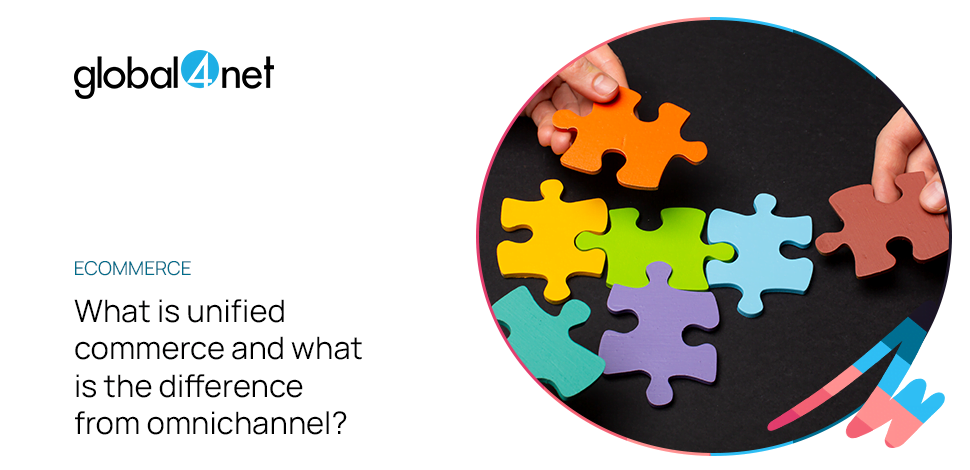What is unified commerce and what is the difference from omnichannel?

Online trade must be quick, seamless, and convenient for you and your customers. In pursuit of this goal, the majority of stores opted for the omnichannel model. However, you can take one step further and utilize the technical solution known as unified commerce.In fact, these two strategies have a lot in common, and unified commerce offers a more technical approach to the philosophy behind omnichannel. What does it mean? Let’s start with the beginning.
What is omnichannel?
Omnichannel is a direct next step after multichannel, which is simply all about using different marketing and communication channels. In this approach, you build a website, open social media profiles, create a mobile app, or maybe even a brick-and-mortar store, and that’s it. Omnichannel takes one more step and integrates all these channels. The goal is to create fully unified communication and UX and provide the same high-quality service, no matter what channel your customers choose.
If you want to implement the omnichannel model, you have to make sure that each communication channel is equal to the others and that they all convey the same things. In practice:
- The inventory is the same
- The purchasing process is the same (moreover, it’s quick and uncomplicated)
- Promotions and special offers are the same
- The general architecture and the way your store works are the same
Thanks to omnichannel, you can improve the UX in your store and build long-term relationships with customers. But at some point, you understand that in order to go forward, you need something more. It all has to work seamlessly from the technical standpoint as well. And that’s where unified commerce saves the day.
What is unified commerce? Unified commerce platform definition
Shortly put, unified commerce is all about connecting and integrating all of your customer-facing solutions with back-end systems. Of course, you need a digital platform to make this possible. Typically, such a platform should be built specifically for your company, as it all depends on the channels and solutions you use.
Unified commerce comprises data coming from such tools as:
- E-commerce platform
- Warehouse management and fulfillment system
- ERP platform
- CRM platform
- Marketing automation tools
- Web analytics tools (e.g., Google Analytics) and all the other systems you use in your company
The idea behind unified commerce is to operate and manage the whole company using one centralized platform that provides a complete view and insight into all company’s operations, customers and their behaviors, as well as marketing and sales strategies. With unified commerce, you can track performance across all channels and markets, spot potential weak points, and adjust your business according to market changes (which are very common in the e-commerce sector, for that matter).
With a unified commerce platform, you can:
- Process and fulfill all orders using just one dashboard
- Easily internationalize your business and create multiple language versions for different markets
- Benefit from advanced reporting functionality acquiring data from many data sources
- Manage and adjust the customer journey to provide top-notch UX to your customers
- Easily implement new solutions to your business model (e.g., new payment options or chatbots)
Four pillars of unified commerce
Unified commerce is based on four crucial elements:
- Platform: You need one centralized platform to manage your whole online store.
- Communication channels: They all have to be integrated into the platform to streamline their management.
- Products: They all should be accessible and well-described in all the channels you offer.
- Customer interactions: With unified commerce, you know your customers better and can analyze their behaviors more thoroughly, which can help you improve marketing and sales efforts.
How to achieve unified commerce
You have two options here. First off, you can create a unified e-commerce platform from scratch. On the upside, you are certain of its quality and adjustment to your business. On the downside, this solution can be time-consuming and expensive.
The second option is based on utilizing available tools. Advanced e-commerce platforms can get close to what unified commerce is all about. You may not get the exact same functionality and flexibility, but it will surely help you streamline all of your business operations.
If you want to integrate solutions and data sources in your store within one comprehensive platform, we are at your service. At Global4Net, we work with online stores and help them achieve their online goals. We will happily support you in creating an advanced platform to manage all (or at least the vast majority) of your business operations.
Drop us a line, and see how we can tweak your online store!








